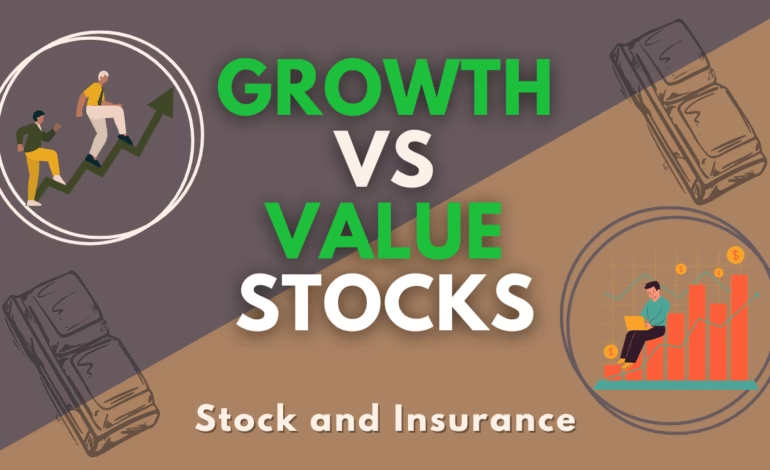
Growth Stocks vs Value Stocks: Which Performs Better?
When you first enter the stock market, one of the biggest questions that comes up is growth stocks vs value stocks. Should you go for high-flying companies with rapid earnings expansion, or stick with undervalued businesses trading below intrinsic worth? This debate is as old as modern investing itself, and yet, it has never been more relevant than today.
Investors across the US, UK, Canada, Singapore, and Australia often wonder which style is better suited for building wealth. Some swear by growth vs value investing as the ultimate decision driver. Others argue that in specific market cycles, like a recession, value vs growth stocks in a recession always emerges stronger. But is this always true? Let’s unpack this in detail.
Understanding Growth Stocks
Growth stocks are companies expected to grow revenue, earnings, or market share faster than the overall market. These businesses often reinvest profits back into expansion rather than paying dividends.
Think about companies like Amazon, Tesla, or Shopify during their rapid rise. They often traded at higher price-to-earnings ratios, but investors were willing to pay that premium because they believed in the future potential.
Characteristics of Growth Stocks:
- High revenue growth rates compared to peers.
- Often in sectors like technology, biotech, or innovative consumer services.
- Higher P/E ratios because investors pay for future earnings.
- Dividends are rare, as profits are reinvested.
Why Investors Love Growth Stocks:
The upside can be huge. Imagine you had invested $10,000 in Amazon in 2008. By 2020, your investment would have grown to over $600,000. That’s the magic of exponential compounding when you back the right growth companies.
But here’s the catch: not all growth stories succeed. Some companies burn cash endlessly and fail to reach profitability. This introduces volatility and risk.
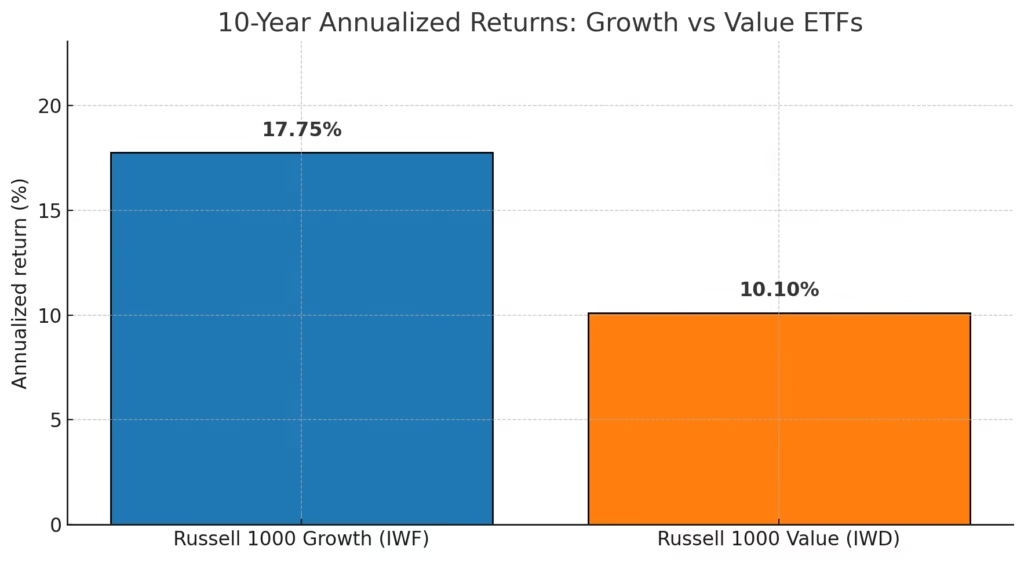
Understanding Value Stocks
Now let’s flip to value stocks. These are companies that trade at a discount to their intrinsic or book value. Think of Warren Buffett, who built Berkshire Hathaway’s empire largely on value vs growth stocks in a recession strategy.
Value stocks are often mature businesses, with steady cash flows and sometimes attractive dividend payouts. They may not be glamorous, but they often provide stability.
Characteristics of Value Stocks:
- Lower P/E and P/B ratios compared to the market.
- More established businesses in industries like banking, energy, or consumer goods.
- Often pay dividends, making them appealing to long-term investors.
- Less volatility compared to growth stocks.
Why Investors Love Value Stocks:
Value investing is like shopping for bargains. During market downturns, value stocks usually hold up better, giving you a cushion. For instance, during the 2008 financial crisis and even the 2020 COVID crash, many value stocks outperformed their high-flying growth peers because investors fled to safety.
Growth vs Value Investing: Which is Better?
This is where the debate gets heated. Growth stocks vs value stocks examples show us that performance shifts over time. In bull markets, growth usually shines. In bear markets or recessions, value tends to outperform.
For instance, between 2009 and 2021, growth investing dominated. Tech giants like Apple, Google, and Microsoft outpaced almost every traditional industry. But in 2022, when interest rates rose sharply and inflation spiked, value stocks regained their glory. Energy, banking, and industrials significantly outperformed growth companies that relied on cheap capital.
So if you are asking which performs better, the honest answer is: it depends on the market cycle.
A Quiz for You
Imagine this:
You have $50,000 to invest today. You must choose between two options:
- A fast-growing tech company trading at 60 times earnings.
- A mature consumer goods company trading at 12 times earnings with a 4 percent dividend yield.
Which one would you choose?
Drop your answer in the comments. . I’ll share why both decisions can be right, depending on your time horizon and risk tolerance.
Growth vs Value Stocks in a Recession
One of the most important aspects of this debate is understanding how value vs growth stocks in a recession behave. Historically, market downturns have been the ultimate testing ground for investment strategies.
During recessions, investor sentiment shifts from chasing rapid earnings to preserving capital. Growth companies often suffer because their valuations are based on future expectations, which suddenly look uncertain. If interest rates rise or credit tightens, growth stocks tend to fall harder.
Value stocks, on the other hand, are often priced conservatively to begin with. Investors see them as safer havens because these companies generate steady cash flows, pay dividends, and are already trading below intrinsic value. That’s why value stocks frequently outperform growth stocks in recessionary periods.
Example:
During the dot-com crash of 2000-2002, many growth companies lost over 70 percent of their value. Meanwhile, classic value stocks like Procter & Gamble and Johnson & Johnson held up relatively well and even rewarded investors with consistent dividends.
In 2022, when inflation and interest rates soared, growth-focused tech companies such as Meta and Netflix saw their valuations drop by 60 percent or more. But energy companies like ExxonMobil and Chevron (value-oriented) not only held steady but delivered record profits due to rising commodity prices.
This doesn’t mean value always wins in downturns, but historically, it provides a cushion when markets turn stormy.
Real Growth Stocks vs Value Stocks Examples
Let’s explore some real-world growth stocks vs value stocks examples to make this comparison more practical.
Growth Stock Example: Tesla
Tesla’s stock price surged over 700 percent between 2019 and 2021. Investors were excited about the company’s dominance in electric vehicles and future energy innovations. But in 2022, as interest rates climbed, Tesla’s high valuation faced pressure, and the stock corrected sharply.
Value Stock Example: Coca-Cola
Coca-Cola has been a textbook example of a value stock for decades. It trades at a reasonable valuation, pays steady dividends, and benefits from global brand loyalty. While it may not deliver explosive growth like Tesla, it offers reliability, especially during downturns.
Balanced Example: Apple
Interestingly, some companies blur the lines between growth and value. Apple was once considered a growth company, but today it trades closer to a value profile with strong cash reserves, dividends, and global dominance. Investors often categorize Apple as a hybrid, appealing to both growth and value enthusiasts.
By comparing these examples, it becomes clear that growth stocks vs value stocks are not just theoretical categories. They have real-world implications for your portfolio.
What the Data Says: Long-Term Performance
Let’s look at long-term research. Academic studies and market analyses have repeatedly shown that over multi-decade horizons, value stocks have delivered slightly higher average returns compared to growth stocks.
For instance, research from Fama and French, two renowned finance professors, found that value stocks historically outperformed growth stocks over long horizons, though with cycles of underperformance.
But from 2009 to 2021, growth stocks dominated. Tech innovation, low interest rates, and global digitization pushed growth companies to record highs, while value stocks lagged. Investors who stuck only to value missed out on huge gains.
This shows why flexibility is key. Rigidly sticking to one strategy may leave you exposed to underperformance during certain cycles. A blended approach often works best.
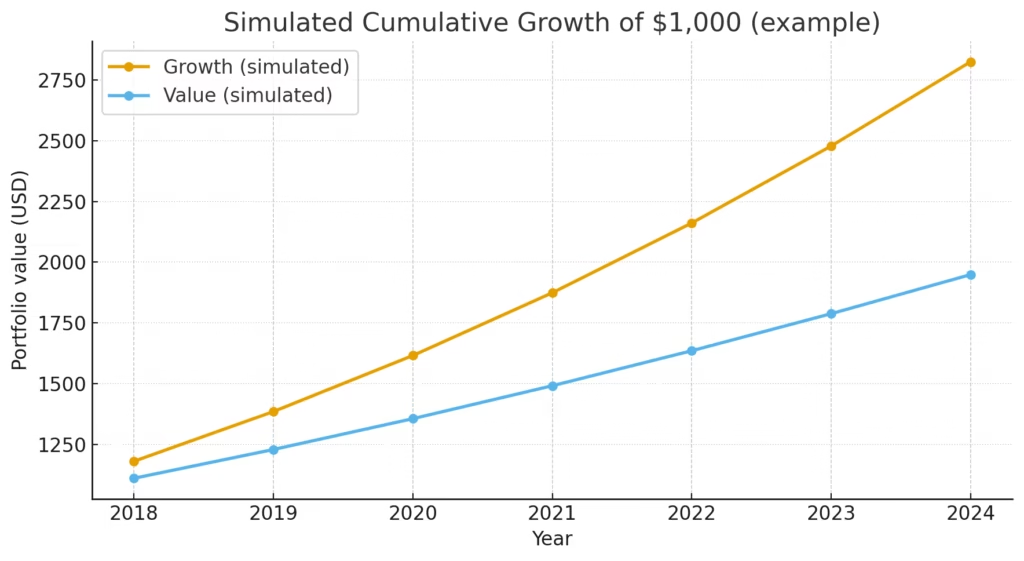
Challenge for You: Spot the Opportunity
Here’s a quick interactive thought experiment for you:
Imagine two companies.
- Company A is a cloud computing firm growing at 25 percent annually but is trading at 50 times earnings.
- Company B is a regional bank growing at 5 percent annually but is trading at 10 times earnings and offering a 5 percent dividend yield.
Which would you add to your portfolio if you expect a recession next year?
Type your answer in the comments. I’ll reveal it later why your choice matters.
The Role of Risk Tolerance and Time Horizon
Another critical factor in deciding between growth vs value investing is your personal risk tolerance and time horizon.
If you are a young investor in your 20s or 30s, you might lean toward growth because you have decades to ride out volatility. If your time horizon is shorter, say you’re nearing retirement, value investing often feels safer because it provides steady income through dividends and less dramatic swings.
It’s not just about returns. It’s about aligning your investments with your life goals. For example, an investor in Canada saving for retirement may prefer a basket of value dividend stocks for security. Meanwhile, a 25-year-old in the US who believes in disruptive innovation may favor growth-heavy ETFs like ARKK.
We’ve now built a solid understanding of how value vs growth stocks in a recession perform, with real examples and academic backing. Lets get into the next step.
Building a Balanced Strategy: Growth and Value Together
So, after analyzing growth stocks vs value stocks, the real question is: why choose only one? The smartest investors often blend both approaches in their portfolios.
Think of it like this: growth stocks are your potential rocket ships, while value stocks are your anchor. The rocket gives you the thrill of high returns, and the anchor ensures you don’t drift away during market storms.
A balanced portfolio might look like:
- 50 percent value-oriented companies (banks, consumer goods, utilities, healthcare)
- 40 percent growth-oriented companies (tech, biotech, renewable energy)
- 10 percent cash or bonds for stability
This way, you’re not overly exposed to one style. When growth outperforms, your portfolio benefits. When value shines during downturns, you’re protected. High-net-worth investors are already diversifying portfolios across asset classes, as we discussed in High-Net-Worth Individuals Diversify Their Portfolios in 2026.
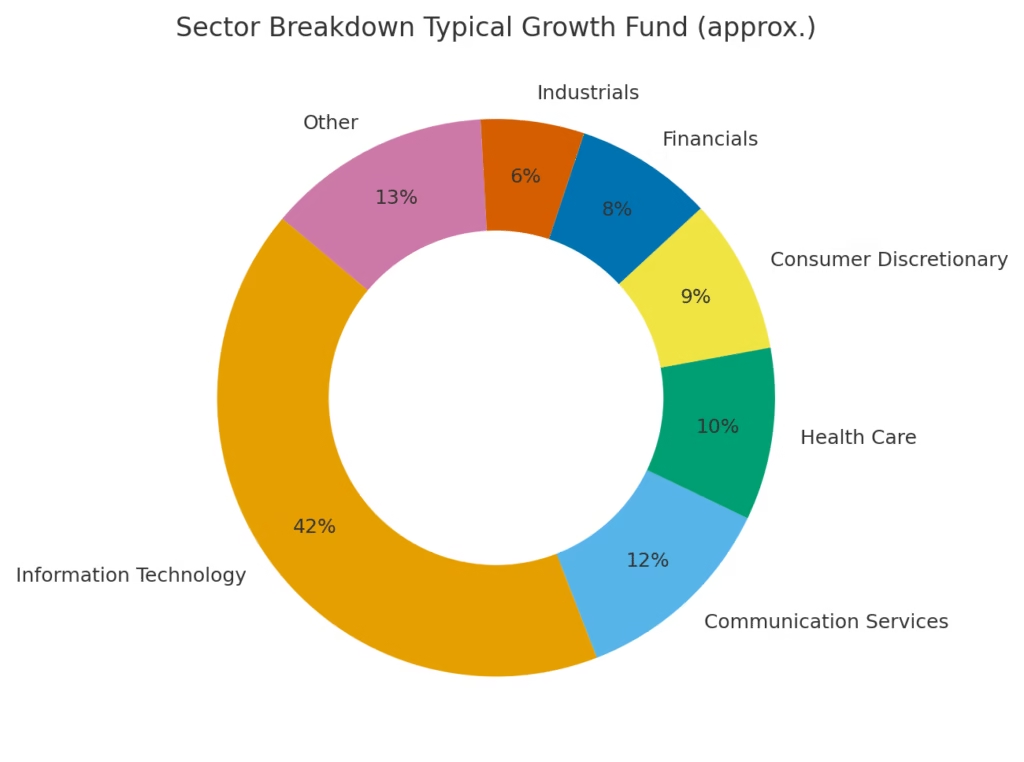
Growth vs Value Investing: Which Performs Better for You?
Here’s where personalization comes in. Instead of asking which performs better in absolute terms, the right question is: which performs better for me?
Ask yourself these questions:
- Do I get anxious during market downturns? If yes, value stocks may suit you better.
- Am I comfortable with volatility for the chance at higher returns? Growth might be your path.
- Do I need income from dividends, or am I reinvesting every cent?
The beauty of investing is that there isn’t one universal answer. It’s about tailoring the strategy to your personality, financial goals, and time horizon.
The Future Outlook: Growth vs Value Stocks in 2026 and Beyond
Looking ahead, many analysts believe we could enter a new cycle where value stocks regain strength. Rising interest rates, geopolitical shifts, and inflation often create conditions where stable, cash-generating companies perform better.
That doesn’t mean growth is finished. Innovations like artificial intelligence, clean energy, and biotech are likely to create the next big winners. But valuations will matter more. Investors are becoming cautious, meaning growth companies will need to justify their high prices with real earnings.
For example, AI-focused companies could see tremendous growth over the next decade, but not every AI stock will survive. Meanwhile, classic value industries like healthcare and energy could remain resilient anchors. As interest rates and inflation shape the next cycle, aligning your portfolio with macro trends matters. Our blog on 401(k) vs IRA: Which Is Right for You? explains how retirement accounts can fit into both growth and value strategies.
Morningstar research shows that growth has outperformed in recent decades, but value often shines during recoveries Morningstar Growth vs Value Insights.
Growth Stocks vs Value Stocks Examples Revisited
Let’s revisit our earlier quiz.
Company A was the cloud computing firm growing at 25 percent annually but trading at 50 times earnings. Company B was the regional bank growing at 5 percent annually but trading at 10 times earnings with a 5 percent dividend yield.
If you expected a recession, the safer pick would have been Company B. Its valuation is low, dividend steady, and performance less tied to market cycles. But if you had a 20-year horizon and believed in digital transformation, Company A could still be a solid choice.
This shows that the right decision depends on timing and your personal risk profile.
Common Mistakes Investors Make
Many beginners fall into one of two traps:
- Chasing only growth: Buying hyped stocks at peak prices without considering valuation.
- Clinging only to value: Missing opportunities in innovative industries that could multiply wealth.
The smart way is balance, research, and patience. Don’t buy Tesla just because everyone is talking about it, and don’t stick with only Coca-Cola if you want long-term growth.
For investors nearing retirement, avoiding these mistakes is even more critical. You can also explore our guide on Retirement Planning Mistakes & Financial Advice to Secure Your Future.
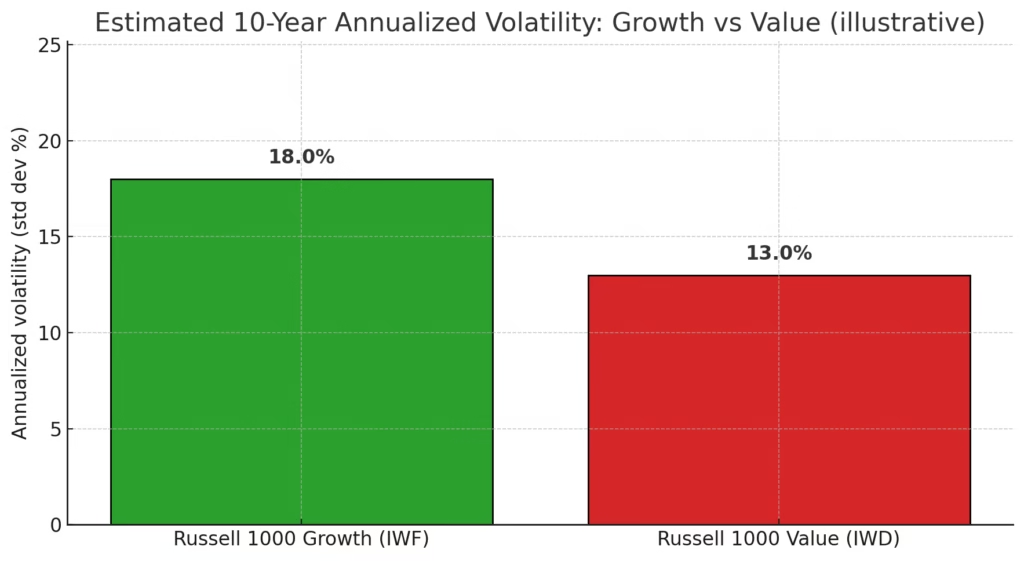
Practical Tips to Get Started
Here are some actionable strategies if you’re torn between growth vs value investing:
- Use ETFs: Funds like Vanguard Growth ETF (VUG) or Vanguard Value ETF (VTV) let you gain exposure without picking individual winners.
- Rebalance annually: Shift weights depending on market conditions. If growth stocks have rallied too much, trim and move into value.
- Think globally: US markets are growth-heavy, while Europe and emerging markets often lean more toward value.
- Stay consistent: Whether you choose growth, value, or both, stick to your plan with regular contributions.
If you’re more interested in stable returns and regular income, check out our guide on the Best Dividend Paying Mutual Funds in 2026: Powerful Income Picks. Investopedia highlights the importance of diversification in modern investing.
Final Thoughts
So, in the debate of growth stocks vs value stocks, there isn’t a single winner. Each plays a role depending on where the economy is, where interest rates are headed, and what stage you are in your financial journey.
The smartest investors are not just choosing sides. They’re blending both strategies to build resilient portfolios that can withstand uncertainty while capturing upside.
Now here’s my question to you: If you had to allocate $10,000 today, how would you split it between growth and value? Drop your answer in the comments. I’ll share a few possible allocation models based on your responses.
Remember, investing is not about timing the market. It’s about time in the market, with the right mix of growth and value that aligns with your goals.



